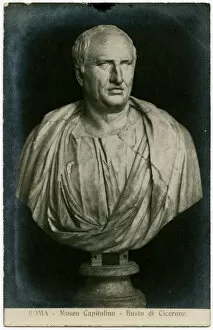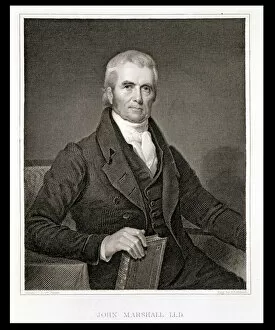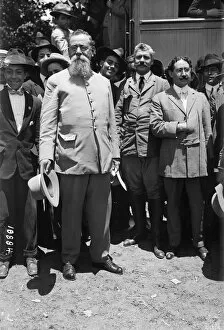Constitutionalist Collection
The constitutionalist movement has a rich history, spanning across different time periods and regions
For sale as Licensed Images
Choose your image, Select your licence and Download the media
The constitutionalist movement has a rich history, spanning across different time periods and regions. From the ancient Roman philosopher Marcus Tullius Cicero to the Mexican Revolution in the early 20th century, constitutionalists have played a crucial role in shaping political systems and advocating for the rule of law. A bust of Cicero serves as a reminder of his immense contributions as a statesman, lawyer, and political theorist. His ideas on governance and constitutionalism continue to inspire generations even today. Similarly, John Marshall's engraving by Asher Brown Durand showcases another influential figure who championed constitutional principles during his tenure as Chief Justice of the United States Supreme Court. In 1924, Winston Churchill's campaign as a by-election candidate exemplified his commitment to upholding democratic values and preserving constitutional norms. His involvement highlights how individuals from diverse backgrounds can embrace constitutionalism as an essential pillar of their political ideology. Moving beyond Europe, Mexico witnessed its own revolution in the early 20th century. The Constitutionalists emerged as key players during this tumultuous period. Wounded insurgents being removed after fighting at Juarez symbolize their determination to establish a government based on democratic principles. Pancho Villa's victorious army driving out Federal troops from Torreon demonstrates how armed conflict became intertwined with efforts to uphold constitutional ideals in Mexico. Even unconventional methods like using bows and arrows were employed by some Constitutionalists during battles. Capturing trains near Nuevo Laredo showcased both strategic prowess and dedication among Mexican Constitutionalists. These actions highlight their commitment to challenging oppressive regimes while striving for greater accountability through adherence to constitutions. Philip Pendleton Barbour's portrait reminds us that American politicians also contributed significantly towards advancing constitutional principles throughout history. Lastly, Venustiano Carranza Garza stands out as an influential Mexican politician who actively supported constitutionalist movements during the revolutionary era. His leadership further emphasized the importance of establishing stable governance structures rooted in legal frameworks.











